Swat Valley
Swat Valley is a high-altitude tourist destination located in the northwest mountains of the Khyber Pakhtunkhwa province in Pakistan. The Swat Valley is situated on the swat river, at the coordinates of 35°12′N 72°29′E, which is at about 247 Km (153 Miles) distance from the capital city Islamabad in Pakistan.
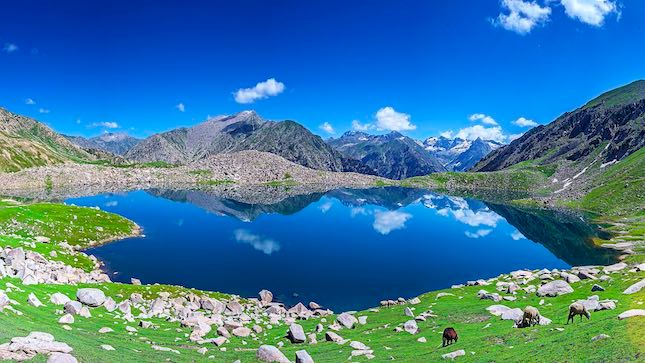
Although swat valley has a reputation for its spectacular natural beauty yet many of its tourist attractions spread across its area of 5,337 km2 (2,061 sq. mi.) are relatively undiscovered.
Until 1969 Swat Valley remained an affluent independent self-governing state called “the Yusafzai State of Swat” before it became a part of Pakistan.
Swat shares borders with Chitral in the northwest, Dir in the west, Malakand in the south, Buner in the southeast. Also Shangla in the east, Kohistan in the northeast, and Gilgit-Baltistan in the north.
The History of Swat
Although Swat is geographically isolated by mountains from the Peshawar plains. The valley has been the main interacting place for the important civilizations of the world. Throughout the swat history, the valley linked China with Central Asia and Europe. Alexander the Great, Mahmood of Ghazni, and Mughal king Babar entered India via the lower part of Swat valley.
Buddhism in Swat
The famous Chinese Buddhist travelers Fa-hsien (403 AD), Sung Yun (519 AD), Hsuan.-tsang (630 AD), came to swat. Also, Wu-kung (752 AD) came to Swat valley from through the present Shangla pass after crossing the Hindukush mountains.
They described swat valley as fertile land, having an abundance, and a variety of produces. Also, they talk about its temperate climate, the beauty of its scenery, and the sacred Buddhist sites when they visited Swat through the difficult passes of Hindukush mountains on their way down to the Indian subcontinent.
In Butkara Swat, near the present Mmgora, under the strata of the Buddhist period, Italian archaeologists found tombs also showing a long occupation of the site. Thus, the scientific analysis of a skull, probably one of the most ancient inhabitants of the valley, indicates a Torwali human type similar to the present inhabitants of the Swat Kohistan.
Asoka issued a large number of edicts inscribed on rock surfaces and converted to the Buddhist religion. During his reign and under his patronage, some of the greatest Buddhist art was produced. Asoka is said to have started the tradition of setting up Stupas to enshrine the relics upon the Buddha and his disciples.
The Archaeology of Swat Vally
The Swat Vally’s archaeology is consists of spectacular ancient remains of the valley such as stupas, monasteries, viharas, forts, castles, petroglyphs, carvings, rock inscriptions, painted shelters, and, stele scattered across the swat valley. The archaeological materials excavated from several hundred archaeological sites bear testimony of Swat’s cultural relations with the East and West spanning over the 5000 years of its history.
Swat the Switzerland of Asia
The British Queen Elizabeth II during her visit to Swat in 1961 called Swat “Switzerland of the east (Pakistan/Asia)” due to its landscape similarities and alikeness in scenic beauty with Switzerland. Additionally, Swat Valley has pleasant weather and for that reason, locals and tourists call it “a paradise on the earth”.
The popularity of Swat Valley
Swat Valley is famous for its natural wonders that include its breathtaking diverse landscape and natural wildlife. Swat has numerous scenic countrysides, lush forests, and impressive high peak mountains. This all provides a suitable natural habitat for wildlife as well as attracts tourists.
Other popular features of swat are; its spectacular freshwater lakes, rivers, springs, waterfalls, and it’s pleasant weather. This all collectively makes it a safe haven for tourism in Pakistan.
Tourist activities in summer and winter are also well-known features of swat. Swat in summer is popular for hiking, trekking, camping, ziplining, chairlift/cable car riding, general holiday making, and honeymoon trips.
In winter sports activities in swat make it the most famous and enjoyable tour destination in Pakistan. National and international tourists visit swat valley in winter [2,804 meters (9,199 ft)] to enjoy skiing, ice skating, sledding, ice hockey, bandy, snowboarding, speed skating, curling, etc.
Virtual Tour of Swat Valley
The swat virtual tour is an illustration of information intended for the prospective tourist audience. The purpose of the virtual tour is to provide you information about swat including weather, accommodation, hospitality, famous tourist locations. This guide aims to provide you free and accurate information so that you enjoy your travel and stay safe.
Let’s enjoy a free virtual tour of the breathtaking swat valley. We will explore its history, heritage, culture, people, food, and tourist attractions.

Saidu Sharif (The Capital)
Saidu Sharif served as the political headquarter and administrative capital of the Swat district since the inception of the State and maintained that status till the merger of the State. Being the capital city, Saidu Sharif hosts the swat central government offices, professional educational institutes, healthcare facilities, etc.
The Saidu Sharif Stupa (excavations in 1963 – 1982) is a reminder of Buddhist presence in swat. This is evidence of Buddhist in the swat valley between 25 BCE and the end of the 1st century. Another important tourist attraction in Saidu Sharif is the Swat Museum which displays thousands of objects of the Buddha era as well as historic artifacts of the pre-Buddhist era.
Mingora Bazar (The Business Centre)
Mingora Bazar is the central business hub of swat which is adjacent to Saidu Sharif on 2.6 km (1.6 miles) distance. People around the valley come to the downtown of Mingora bazaar (Market) for shopping and other business activities.
The hustle and bustle of the Mingora market continue until late at night. In the city centre the locals alongside the tourists enjoy shopping and dining until late at night.
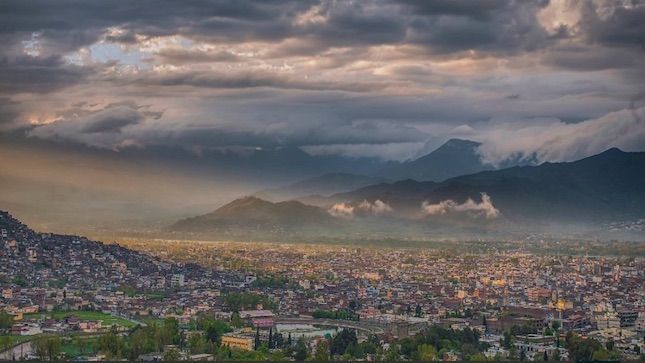
Mingora Bazar is a convenient place for tourists to say or get prepare and do the last minute shopping while they are on the move to the more adventurous areas of swat. There are thousands of shops in Mingora city that all day long offer merchandise for sale.
Mingora has a variety of hotels, restaurants, takeaways, cafes, and western food outlets offering both local as well as fast-food.
The District of Swat
Swat District is one of the seven administrative districts of the Malakand Division. The district and its administrative management fall under the territory of the Government of Khyber Pakhtunkhwa (KP) province of Pakistan.
The administration of the Swat District governs its territory and serves as a capital for the Malakand Division overall. Thus administratively governs all seven districts of Malakand Division i.e. Buner District, Chitral District, Lower Dir District, Upper Dir District, Malakand District, Shangla District, and Swat District.
Swat District has a total of seven subdivisions (aka Tehsils) i.e. Babuzai, Matta, Khwaza Khela, Barikot, Kabal, Charbagh, and Bahrain. Each Tehsil comprises certain numbers of Union councils. There are 65 Union councils in District Swat i.e. 56 rural and 9 urban. Under the new local government system, the District Swat manages 67 wards. This further subdivides to 170 village councils and 44 neighborhood councils.
The Mountain of Swat Valley
Swat is also famous for its majestic mountains located among the foothills of the Hindukush mountain range where you can go hiking, trekking, walking, and even meditating. The elevation of the Swat river valley, at the southern boundaries of the district, is over 600 m and rises rapidly towards the north.
There are several mountain peaks ranging from 4500 to over 6000 m above sea level. The Swat region, containing the meandering Swat River, is also home to lush green valleys, snow-covered glaciers, forests, meadows, and plains. The district has varying geology.
The Lakes of Swat Valley
Swat is blessed with nature’s beautiful lakes. Its mesmerizing lakes not only add to the scenic beauty but are also popular attractions among visitors and locals for fishing, hiking, water sports or simply relaxing in the beauty of nature. Lakes in Swat carry a rich history with them,
and great tales of myths add to the magic of their landscapes.
The breathtaking views of the beauty of lakes in Swat and it’s freshwaters make them a perfect stop. The swat valley has numerous ponds and many majestic large freshwater lakes. The valley has nearly 35 famous lakes, each of them being unique with its lure and sparkling landscapes. These lakes are home to numerous species of plants and wildlife.
The Yousafzai Tribe in Swat
The people of swat are mostly of Pashtun (Pashtun) ethnic group native to Afghanistan. They are the Afghan Yusafzai tribe (Yousafzai tribe), which migrated from Afghanistan five hundred years ago and settled in Swat. For this very reason, the people of Swat have retained their particular tribal culture and characteristics to this day.
The local people of Swat are very friendly, they take great interest in the tourists. You will often find local people holding friendly conversations with tourists. Their love with swat is usually a great topic for the locals to discuss, especially the glory days swat state and related stories told by their grandparents.
As a tourist, you will find it very easy to exchange information with the local people, they are perhaps as much curious about you and your foreign culture as much as you are about swat or it’s inhabitants. Pashtun people overall are very honest, straightforward, and outspoken that is why you will mostly find them direct in tone.
The population of swat valley is roughly 2,309,570 according to the most recent census held in 2017, with 90.28% Pashtun and 8.67% Kohistani inhabitants. Based on these numbers population-wise Swat is the 15th biggest district of Pakistan.
Languages Spoken in Swat
The Mother Tongue of Swat is the Pashto which is widely spoken across the valley. Other languages that are widely understood in Swat are Urdu, English, and Persian. As an English speaking tourist, you will always easily find someone local who will communicate with you in the English Language.
Weather & Climate of Swat
The Swat weather actually tends to be quite moderate and changeable but is rarely extremely hot. Despite being a relatively small valley, one of the most surprising things about the Swat climate is just how much it varies from one region to another. You might experience ‘four seasons in one day’, but travel 20-30 minutes in any direction and the weather is generally completely different!
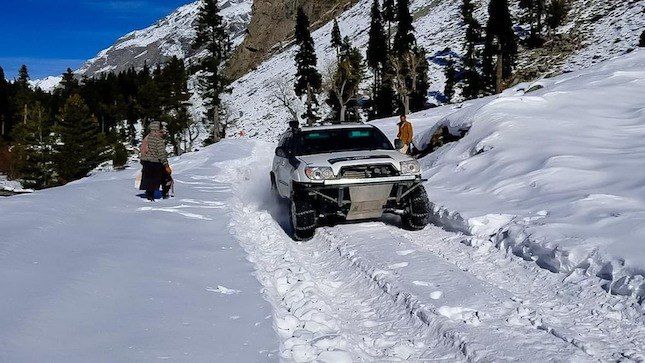
When it is Spring season in Swat, you can expect average maximum temperatures to range from approximately 7°C (45°F) to 13 °C (55°F) during the months of March, April, and May.
Summer months in Swat i.e. June, July and August are normally the warmest months, with average maximum temperatures ranging from approximately 15°C (59°F) to 17°C (63 °F). In the Autumn (or Fall), Swat is likely to experience temperatures ranging from around 8°C (46°F) to 14°C (57°F) from September to November.
December, January, and February are generally the coldest months in Swat, with the average maximum temperature usually around 5°C (41°F).
When is the Best Time to Visit Swat
Considering the 365 days a year, from the mid of March till the end of May is the best time to visit Swat when the weather is mostly mild. From June till the end of August is generally a more suitable time to visit swat when the lower regions of Pakistan are under intense heatwaves and shelter in this refreshingly cool valley is needed the most. The best time for skiing and other winter sports is from December till the end of February when especially the upper regions of swat are under a good snow cover and make it ideal for skiing and winter sports activities.
In conclusion, March to November is a more ideal time to visit swat for family tours with children, school holidays, city breaks, and shot & weekend breaks, etc. December till February is the best time to visit swat valley for winter sports or for winter holidays and adventures.
Customs and Traditions in Swat
Mailmastia (Hospitality) is one of the stronger traditions and is considered a sign of dignity and honor in Swat and across the board in the Pashtun society. The selfish and misers are greatly disliked in the Pashtun traditions.
Apart from providing food and shelter, hospitality also includes the protection of the life, property, and honor of the guest. The people of Swat have a very warm and welcoming attitude towards their personal gusts and general visitors to the valley. Whether you are a special invited guest or visiting swat on your own, you will be obligatorily welcomed, felt safe, and honored by the locals.
The Pashtunwali (Hospitality) is one of the core components of the Pashtun Code. There are many characteristics of Pashtun culture in Swat and a hujra is one of them. From the northwestern mountainous terrains of Pakistan to the heart of Afghanistan to anywhere in the world where Pakhtuns live, there exists the hujra.
Exclusively for the male population, a hujra plays host to various aspects of the social life of Pakhtun society from resolving community disputes to hosting wedding ceremonies. A hujra can be loosely translated as a social club for the locals and can be a place of free accommodation for a stranger visitor. Hospitality is considered the pride of a Pakhtun and this is why everyone in the tribe tries to serve the guests in the hujra.
Hotels in Swat Valley
The options for accommodation in Swat are endless ranging from apartments, lodges, holiday parks, cottages, hostels, hotels, and even paying guest options available to choose from. You’ll find both luxury and budget hotels in Swat, all perfect for putting your feet up and enjoying a good night’s sleep. Grand country houses, sleek penthouse suites, authentic family-run inns, and pleasant hill resorts are just a few of the hotel types you’ll find in Swat Valley.
If you’re looking for a home away from home where you can relax in your own space, then self-catering is the way to go! Choosing a bed and breakfast (B&B) is a sure-fire way to meet hosts who are passionate about Swat and willing to go the extra mile to make your break fantastic.
Wake up to a homemade breakfast, get local tips on the best places to go, and enjoy a relaxed stay. Pack a tent, bring your caravan, book a yurt, or hire a campervan and head to a campsite, caravan site, or even into the wild for a Swat adventure.
The Cuisine of Swat
Swat offers a great variety of local traditional food to its inhabitants and visitors. Swat cuisine is covered under Pashtun cuisine which is commonly known as Afghan cuisine. Although swat food remarkably resembles the Afghani, Persian, and Turkish cuisines however it has its own unique taste, aroma, and texture. The food is not spicy hot like Pakistani and Indian food but is rather mild in hotness and intensely enriched using locally grown herbs and mild spices.

Bread and rice being the staple food, swat cuisine is largely based on meat dishes that include lamb, beef, chicken, and freshwater fish as well as locally grown fresh vegetables and fruits. Other food items in swat include dairy products (yogurt, whey, cheeses), swat honey, various nuts, as well as dried fruits.
When you visit swat we recommend you try the taste of mouth-watering Chapli kebab, Kabuli pulao, Tikka kebab, Tikka skewers, Grilled on charcoal, Dum Pukht, and of course the very delicious of swat trout fish. Another recommended food is the signature dish of Swat that you probably can’t find elsewhere in the world is called Chukand or Warjalay.
Outdoor Recreation in Swat
Swat has countless suitable places for outdoor recreations such as hiking, camping, road biking, mountain biking, rock climbing, winter sports, fly fishing, hunting, horseback riding, kayaking, rafting, road and trail running, and more. Having both plane and extreme mountainous landscapes swat offers a versatile range of outdoor activities for all group ages.
Whether you want to enjoy your time in the comfort of downtown in Saidu Sharif or in the surroundings of Mingora city, or you want to experience the utmost recreations of upper swat in its great mountains, lush green jungle, waterfalls, and freshwater lakes you will realize that you have chosen the right place.
Camping in Swat Valley
The wide array of free caravan and campsites in swat makes it a perfect fun place for both family breaks and outdoor adventures. Whether you’re looking for somewhere packed with on-site activities, an off-the-grid site with a little more peace and quiet, or a camping pod in swat where you can have campfires in the woods – Swat is a safe place to pitch and accommodate your tent in harmony with both people and nature.
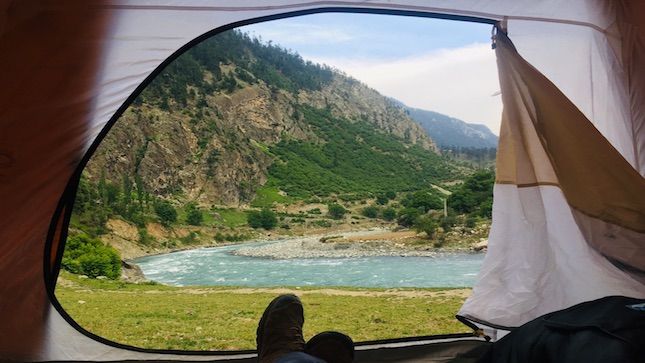
Wild camping is a great way to discover the most remote parts of Swat, whilst helping you get away from it all. Although wild camping is legal in Swat Valley, it’s important to keep in mind this simple formula:
Respect the countryside + be safe = happy wild camping!
Hiking in Swat
As more and more people embrace hiking, Swat continues to receive an influx of tourists looking to hike its beautiful mountain trails. Swat’s long-distance routes provide superb opportunities to get out there on foot to discover and explore some of the best of Swat’s landscapes and wildlife.
Hiking and Walking routes in Swat vary greatly in character, from sections of footpaths and walking tracks around the center of the Mingora and Saidu Sharif cities to the rough terrain through the rugged mountains that provide challenging opportunities for the hikers and backpackers.
Backpacking in Swat
Backpacking in swat is a great adventure activity that blends hiking very well with camping in the valley. It lets you broaden your horizons beyond the car campground to enjoy a richer, more immersive outdoor experience. Backpacking Swat is an unforgettable experience, It enables you to visit swat on a low budget although many people will tell you otherwise!
Backpacking is a great exercise for travelers. Combining long hikes with a bit of weight strapped to your back is sure to make you a little faster, stronger, and better than the average traveler. Depending on the environment you are exploring, backpacking in Swat can range from a light trek through the forest to a grueling mountain climb.
Is Swat Safe for Tourists?
Swat is a peaceful safe place for both domestic and foreign tourists. The locals are keen to see foreign visitors as their local economy is mostly dependent on tourism. The people of swat are humble and historically they have a great tendency toward hospitality whether you are a domestic or international tourist.
The local government has invested millions to initiate a new tourism project and to maintain the safety and security situation in swat for both residents and tourists.
How to Visit Swat by Road?
These days getting to swat is easier than ever. Visitors can reach swat mainly through road and by air. Swat Motorway also knew as swat expressway is the easiest option when traveling by road. Swat Motorway links the Valley to Islamabad and Peshawar City.
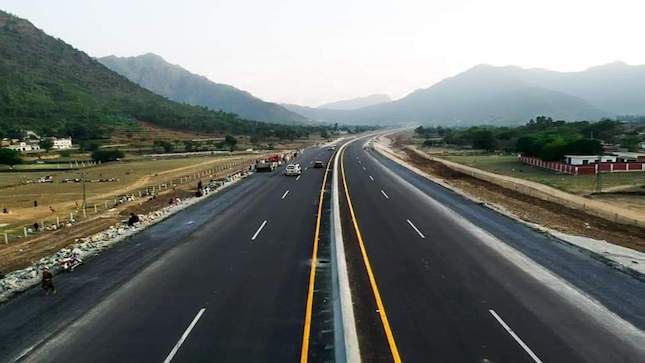
Islamabad to Swat Travel Distance
The distance between Islamabad and Swat (Mingora) is around 230 km (143 miles). The route between Islamabad and Swat is mostly covered by M1 and M16 motorways with a travel time of roughly 3 hours. Starting from Islamabad via Srinagar Hwy for 22 min (20.7 km). Then follow AH1/M-1 and M-16 to Khyber Pakhtunkhwa for 1 hr 52 min (171 km), and finally follow the Bahrain Rd/N-95 to GT Rd in Mingora, Swat for 1 hr 2 min (38.9 km).
An alternative option when traveling Swat from Peshawar by road is the National Highway (45). The travel distance between Swat and Peshawar is around 157 Km (97 Miles) which takes between 4 to 5 hours.
** Your post has been upvoted (1.43 %) **
Curation Trail is Open!
Join Trail Here
Delegate more BP for bigger Upvote + Daily BLURT 😉
Delegate BP Here
Upvote
https://blurtblock.herokuapp.com/blurt/upvote
Thank you 🙂 @tomoyan